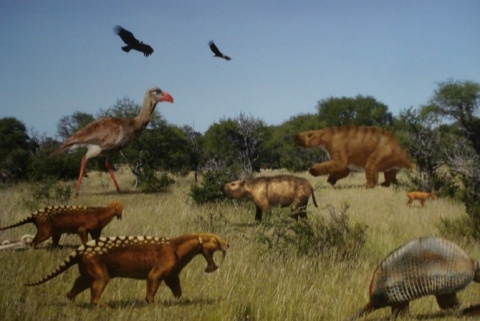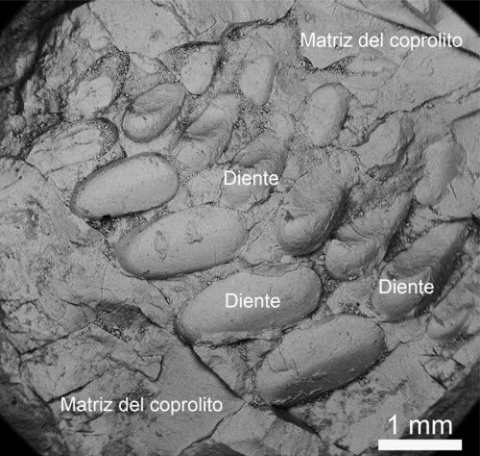Paleontología
Are hyoliths Palaeozoic lophophorates?
Noticia en inglés
Hyoliths are extinct invertebrates with calcareous shells that were common constituents of the Cambrian fauna and formed a minor component of benthic faunas throughout the Palaeozoic until their demise in the end-Permian mass extinction. The biological affinity of hyoliths has long been controversial and the group has been compared with a number of animal phyla, most frequently the Mollusca or the Sipuncula, although other researchers have considered hyoliths as a separate "extinct phylum". However, recent discoveries of a tentaculate feeding apparatus ('lophophore') and fleshy apical extensions from the shell ('pedicle'), have resulted in hyoliths being placed within the lophophorates with a close relationship to the brachiopods.
A new article by Zhifei Zhang and his research group at Northwest University, China, together with Dr. Christian Skovsted from the Swedish Museum of Natural History have questioned this phylogenetic placement, after analyzing hundreds of hyolith fossils from the lower Cambrian (520 million years ago) Chengjiang Biota of South China (Liu et al.). In their material from South China, the first credible soft parts of an orthothecid hyolith other than the gut has been preserved in the species Triplicatella opimus.
The soft part morphology of Triplicatella opimus confirms the presence of a tentaculate feeding organ in orthothecids, demonstrating that both recognized orders of hyoliths possessed a tentaculate feeding organ. The tuft-like arrangement of the tentacles of T. opimus differs from that of hyolithids suggesting a different function of the feeding organ between orthothecid (collecting food directly from the substrate) and hyolithid hyoliths (filter feeding strategy).
![[Img #57899]](https://noticiasdelaciencia.com/upload/images/11_2019/7615_217204_web.jpg)
Reconstruction of Triplicatella opimus from the Chengjiang Lagerstätte in a proposed deposit-feeding lifestyle. (Credit: ©Science China Press)
A comparative study was undertaken by Liu et al., investigating the structure of the feeding organ between hyoliths and other recognized fossil and modern lophophore-bearing animals. This analysis indicated that the structure lacked many morphological features that are distinctive of a lophophore and consequently it is likely that the feeding organ of hyoliths is not a lophophore. The tuft-like morphology of the feeding apparatus of Triplicatella from South China additionally suggests that the organ was adapted to feeding on nutrients directly from the substrate rather than filter feeding as seen in younger hyolith specimens. Liu et al. further suggest filter feeding in hyoliths may have been a secondary adaption, evolving later with the appearance of helens, a mineralized structure used to lift the body of the hyoliths above the seafloor.
Recently, scientists illustrated apical structures from a species of hyolith from the Cambrian of South China, claiming that they represent an attachment structure similar to the brachiopod pedicle. A detailed analysis of the apical structures by Liu et al. have demonstrated that these structures represent crushed portions of the shell and are not in any way comparable to the brachiopod pedicle. The identical morphology of apical structures could also be observed in hyolith specimens from a nearly contemporaneous fauna (Shipai Biota) that allows for a better understanding of how this part of the shell is preserved. The similarity in ornament between the apical structure and the rest of the shell and the similarity in preservation indicates that the purported pedicle in orthothecid hyoliths represents a partly crushed apical shell section and is not a biological analogue to the complex organ that constitutes a brachiopod pedicle.
In their article for NSR, Liu et al. consider that this new evidence suggests that hyoliths did not possess a lophophore or a pedicle similar to those of brachiopods. Liu et al. instead argue that hyoliths likely occupied a more basal position in the Lophophorata, a conclusion which is strengthened by recently published data on hyolith shell structures. (Fuente: Science China Press)



